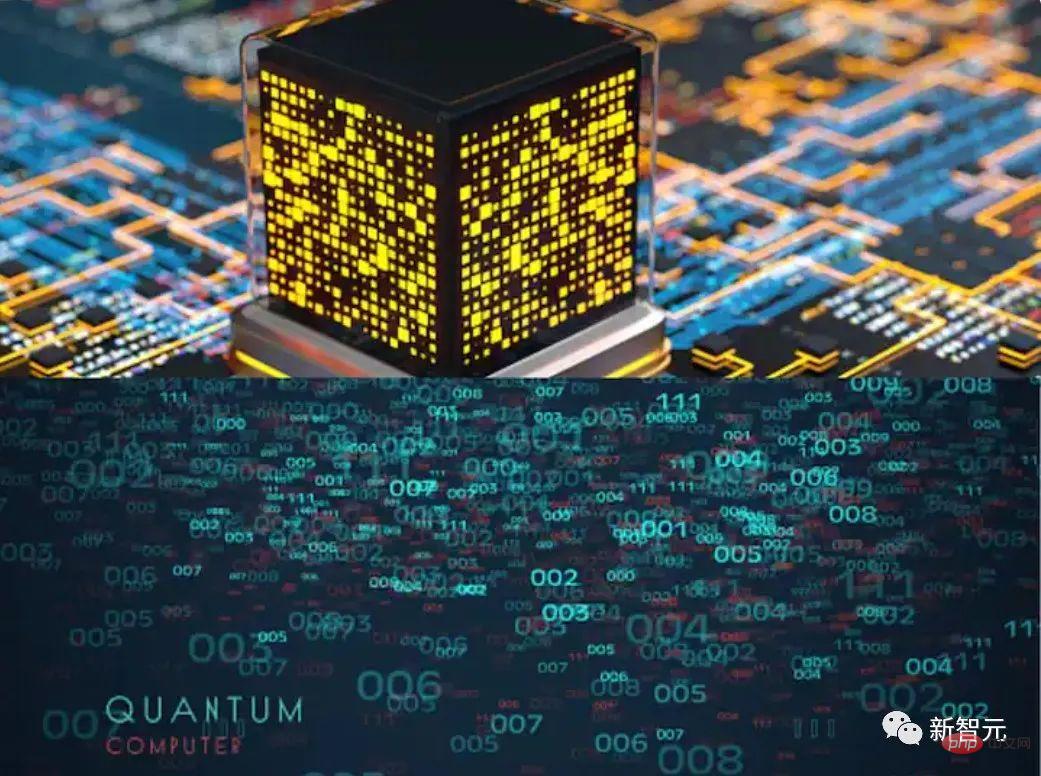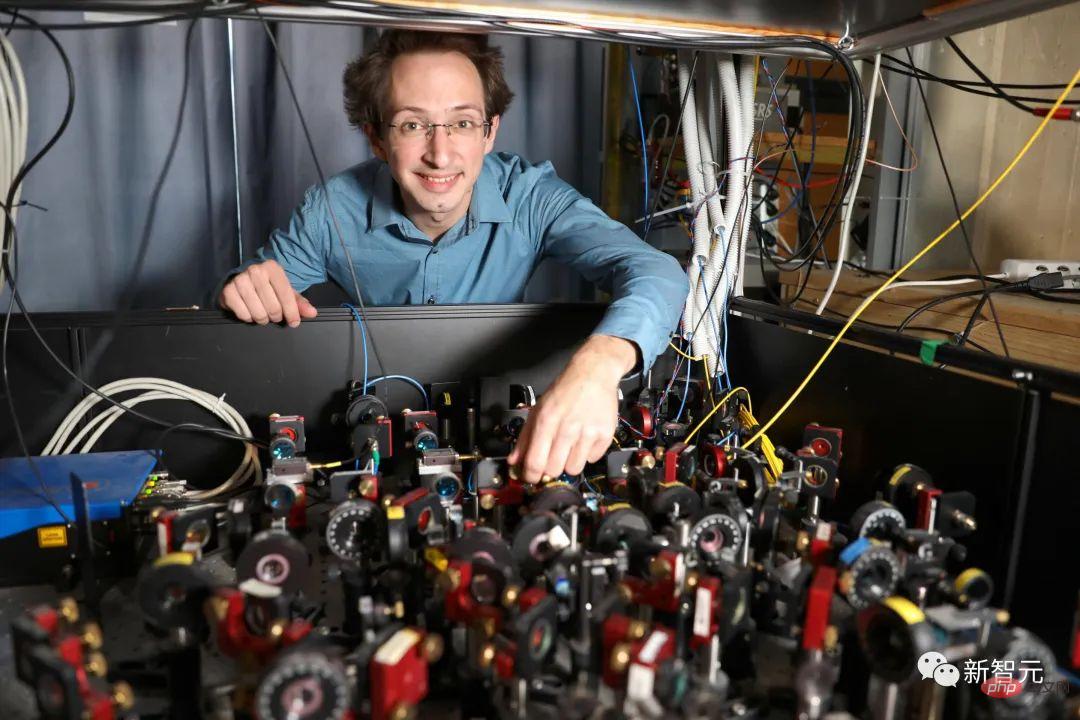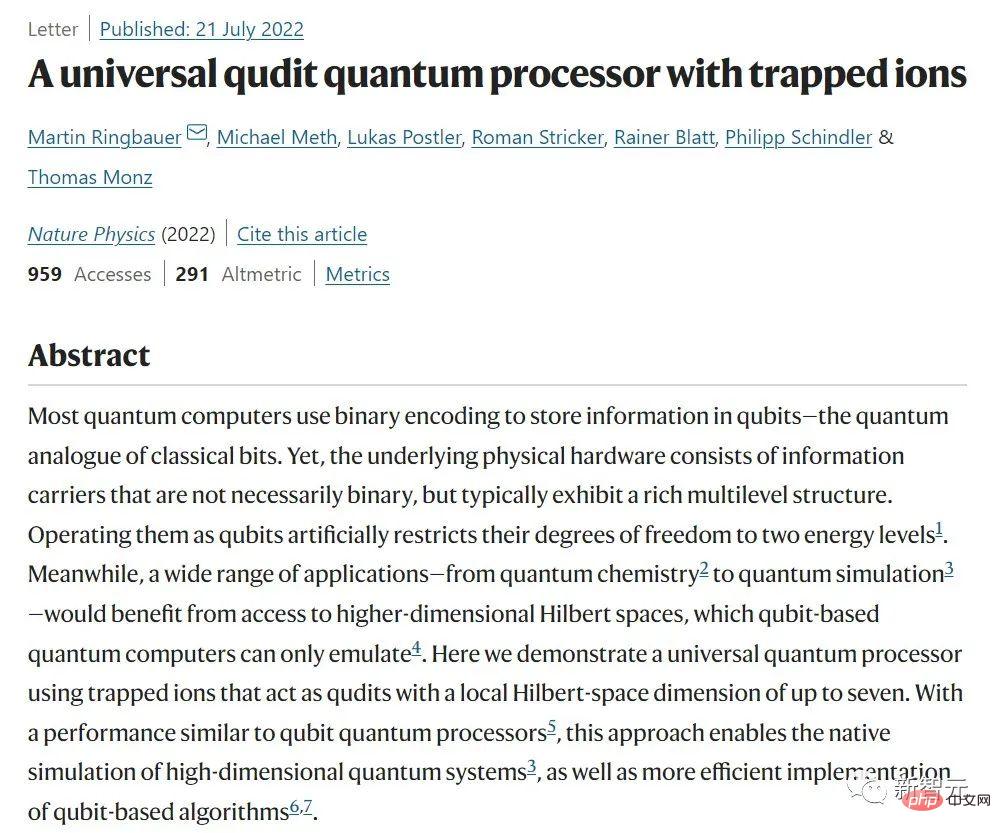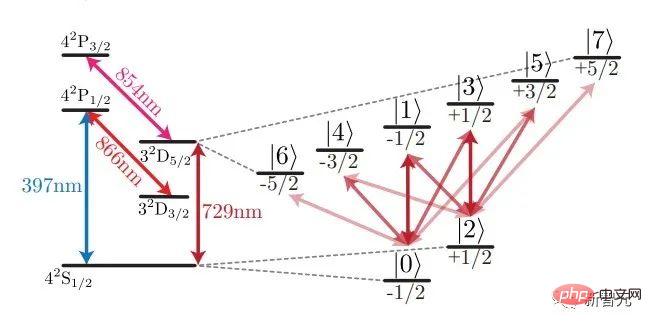 Technology peripherals
Technology peripherals
 AI
AI
 New quantum computer breaks binary for the first time, information stored in calcium atoms
New quantum computer breaks binary for the first time, information stored in calcium atoms
New quantum computer breaks binary for the first time, information stored in calcium atoms
For decades, binary has been the basis for computer calculations, but for quantum computers, the binary system has hindered their true potential. Recently, a team of scientists from the University of Innsbruck, Austria, realized a new type of quantum computer that successfully broke through the binary calculation mode and used so-called "quantum numbers" to perform calculations, thus releasing more quantum computers with fewer quantum particles. Much computing power.

Researchers have developed a quantum computer that harnesses the full potential of calcium atoms by using qubits to perform calculations. Research shows that, unlike classical computing, using more quantum states does not reduce a computer's reliability.
#We all know that computers use 0s and 1s—that is, binary information—to perform calculations. This model has been so successful that computers now power everything from coffee machines to self-driving cars, and it’s hard to imagine life without them.
Building on this success, today’s quantum computers are also designed with binary information processing in mind. "However, a quantum computer is made up of more than just 0s and 1s," explained experimental physicist Martin Ringbauer in a statement released by the University of Innsbruck. "Limiting them to binary systems prevents these devices from reaching their true potential."

Quantum physicist Martin Ringbauer experiments room.
A team led by Thomas Monz from the Department of Experimental Physics at the University of Innsbruck has now successfully developed a quantum computer that can use so-called "quantum numbers" ( qudits) to perform arbitrary computations, freeing up more computing power with fewer quantum particles. This research was recently published in the journal Nature Physics ()

(Quantum computers can perform arbitrary calculations using so-called quantum numbers, or qubits. This can free up more calculations with fewer quantum particles Ability. Qubits are the basic unit in quantum computers and correspond in quantum computing to binary digits in classical computing. Qubits are made up of quantum systems such as electrons or photons.)
Brand new Quantum SystemsAlthough storing information in 0s and 1s is not the most efficient way to compute, it is the simplest. Simplicity also generally means reliable and robust to errors, so binary information has become the impeccable standard for classical computers.

The Innsbruck quantum computer stores information in individual trapped calcium atoms, each of which has eight states. , scientists have used seven of these states for calculations.
In the quantum world, the situation is very different. In the Innsbruck quantum computer, for example, information is stored in individual trapped calcium atoms. Each of these atoms naturally has eight different states, only two of which are typically used to store information. In fact, almost all existing quantum computers can reach many more quantum states than they are used for calculations.
In their experiments, the researchers demonstrated a universal Qudit ion trap quantum processor (TIQP) that uses the native hierarchical structure of the 40Ca ion trapping chain. Experiments show that each 40Ca ion inherently supports a Qudit with 8 energy levels, with a highly connected Hilbert space.

Energy level diagram of 40Ca ion. Quantum information is encoded in the S1/2 and D5/2 states, where each transition between S and D can be accessed using a single narrowband laser at 729nm.
VERY NATURAL APPLICATIONS
This new quantum computer can exploit the full potential of these atoms by computing using qudits. Contrary to the classic case, using more states does not make the computer less reliable. "Quantum systems naturally have more than two states, and we showed that we can control them equally well," said Thomas Monz.
On the other hand, many tasks that require quantum computers, such as problems in physics, chemistry, or materials science, are also naturally expressed in the language of qudits. Rewriting them in qubits is simply too complex for today's quantum computers. "It is very natural not only for a quantum computer but also for its applications to use more than 0 and 1, which allows us to unlock the true potential of quantum systems," explains Martin Ringbauer.
The above is the detailed content of New quantum computer breaks binary for the first time, information stored in calcium atoms. For more information, please follow other related articles on the PHP Chinese website!

Hot AI Tools

Undresser.AI Undress
AI-powered app for creating realistic nude photos

AI Clothes Remover
Online AI tool for removing clothes from photos.

Undress AI Tool
Undress images for free

Clothoff.io
AI clothes remover

AI Hentai Generator
Generate AI Hentai for free.

Hot Article

Hot Tools

Notepad++7.3.1
Easy-to-use and free code editor

SublimeText3 Chinese version
Chinese version, very easy to use

Zend Studio 13.0.1
Powerful PHP integrated development environment

Dreamweaver CS6
Visual web development tools

SublimeText3 Mac version
God-level code editing software (SublimeText3)

Hot Topics
 CUDA's universal matrix multiplication: from entry to proficiency!
Mar 25, 2024 pm 12:30 PM
CUDA's universal matrix multiplication: from entry to proficiency!
Mar 25, 2024 pm 12:30 PM
General Matrix Multiplication (GEMM) is a vital part of many applications and algorithms, and is also one of the important indicators for evaluating computer hardware performance. In-depth research and optimization of the implementation of GEMM can help us better understand high-performance computing and the relationship between software and hardware systems. In computer science, effective optimization of GEMM can increase computing speed and save resources, which is crucial to improving the overall performance of a computer system. An in-depth understanding of the working principle and optimization method of GEMM will help us better utilize the potential of modern computing hardware and provide more efficient solutions for various complex computing tasks. By optimizing the performance of GEMM
 How to calculate addition, subtraction, multiplication and division in word document
Mar 19, 2024 pm 08:13 PM
How to calculate addition, subtraction, multiplication and division in word document
Mar 19, 2024 pm 08:13 PM
WORD is a powerful word processor. We can use word to edit various texts. In Excel tables, we have mastered the calculation methods of addition, subtraction and multipliers. So if we need to calculate the addition of numerical values in Word tables, How to subtract the multiplier? Can I only use a calculator to calculate it? The answer is of course no, WORD can also do it. Today I will teach you how to use formulas to calculate basic operations such as addition, subtraction, multiplication and division in tables in Word documents. Let's learn together. So, today let me demonstrate in detail how to calculate addition, subtraction, multiplication and division in a WORD document? Step 1: Open a WORD, click [Table] under [Insert] on the toolbar, and insert a table in the drop-down menu.
 How to count the number of elements in a list using Python's count() function
Nov 18, 2023 pm 02:53 PM
How to count the number of elements in a list using Python's count() function
Nov 18, 2023 pm 02:53 PM
How to use Python's count() function to calculate the number of an element in a list requires specific code examples. As a powerful and easy-to-learn programming language, Python provides many built-in functions to handle different data structures. One of them is the count() function, which can be used to count the number of elements in a list. In this article, we will explain how to use the count() function in detail and provide specific code examples. The count() function is a built-in function of Python, used to calculate a certain
 Huawei will launch innovative MED storage products next year: rack capacity exceeds 10 PB and power consumption is less than 2 kW
Mar 07, 2024 pm 10:43 PM
Huawei will launch innovative MED storage products next year: rack capacity exceeds 10 PB and power consumption is less than 2 kW
Mar 07, 2024 pm 10:43 PM
This website reported on March 7 that Dr. Zhou Yuefeng, President of Huawei's Data Storage Product Line, recently attended the MWC2024 conference and specifically demonstrated the new generation OceanStorArctic magnetoelectric storage solution designed for warm data (WarmData) and cold data (ColdData). Zhou Yuefeng, President of Huawei's data storage product line, released a series of innovative solutions. Image source: Huawei's official press release attached to this site is as follows: The cost of this solution is 20% lower than that of magnetic tape, and its power consumption is 90% lower than that of hard disks. According to foreign technology media blocksandfiles, a Huawei spokesperson also revealed information about the magnetoelectric storage solution: Huawei's magnetoelectronic disk (MED) is a major innovation in magnetic storage media. First generation ME
 Vue3+TS+Vite development skills: how to encrypt and store data
Sep 10, 2023 pm 04:51 PM
Vue3+TS+Vite development skills: how to encrypt and store data
Sep 10, 2023 pm 04:51 PM
Vue3+TS+Vite development tips: How to encrypt and store data. With the rapid development of Internet technology, data security and privacy protection are becoming more and more important. In the Vue3+TS+Vite development environment, how to encrypt and store data is a problem that every developer needs to face. This article will introduce some common data encryption and storage techniques to help developers improve application security and user experience. 1. Data Encryption Front-end Data Encryption Front-end encryption is an important part of protecting data security. Commonly used
 Count the number of occurrences of a substring recursively in Java
Sep 17, 2023 pm 07:49 PM
Count the number of occurrences of a substring recursively in Java
Sep 17, 2023 pm 07:49 PM
Given two strings str_1 and str_2. The goal is to count the number of occurrences of substring str2 in string str1 using a recursive procedure. A recursive function is a function that calls itself within its definition. If str1 is "Iknowthatyouknowthatiknow" and str2 is "know" the number of occurrences is -3. Let us understand through examples. For example, input str1="TPisTPareTPamTP", str2="TP"; output Countofoccurrencesofasubstringrecursi
 How to use the Math.Pow function in C# to calculate the power of a specified number
Nov 18, 2023 am 11:32 AM
How to use the Math.Pow function in C# to calculate the power of a specified number
Nov 18, 2023 am 11:32 AM
In C#, there is a Math class library, which contains many mathematical functions. These include the function Math.Pow, which calculates powers, which can help us calculate the power of a specified number. The usage of the Math.Pow function is very simple, you only need to specify the base and exponent. The syntax is as follows: Math.Pow(base,exponent); where base represents the base and exponent represents the exponent. This function returns a double type result, that is, the power calculation result. Let's
 Git installation process on Ubuntu
Mar 20, 2024 pm 04:51 PM
Git installation process on Ubuntu
Mar 20, 2024 pm 04:51 PM
Git is a fast, reliable, and adaptable distributed version control system. It is designed to support distributed, non-linear workflows, making it ideal for software development teams of all sizes. Each Git working directory is an independent repository with a complete history of all changes and the ability to track versions even without network access or a central server. GitHub is a Git repository hosted on the cloud that provides all the features of distributed revision control. GitHub is a Git repository hosted on the cloud. Unlike Git which is a CLI tool, GitHub has a web-based graphical user interface. It is used for version control, which involves collaborating with other developers and tracking changes to scripts and





